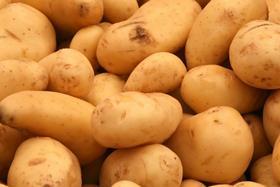
Travelling on the London Underground network a few days into the new year, an advert above the seat opposite – complete with a gloomy picture of said product – read: ‘Can’t face any kind of potato for dinner again this week?’
The advert, for rice firm Veetee, was seemingly aimed at Generation Y – a demographic cohort who, we are told, are more frequently ditching the carb of choice of previous generations for alternatives such as rice and pasta, but who had presumably just spent a festive season at the mercy of their elders’ potato-heavy meal plans.
It is a topic that affects everyone involved in the potato supply chain. George Christoudias, sales and marketing director at leading potato supplier Branston, says: “There’s continued discussion and ongoing activity to increase consumption and improve the health perception of the category.
“Waste has also been a key focus, and has been thrust further into the spotlight through recent media attention. It is crucial both points are tackled with the consumer in mind at all times.”
These aren’t the only two issues that are presenting problems for those in the trade either. Andy Clarkson, commercial retail director at fresh produce giant Greenvale, says: “As is predictable at this time of the year, there appears to be a two-tier market opening up. The talk of how this will work through in the balance of the season is always difficult to predict. Plus the split of quality is yet to be understood.”
Meanwhile Andrew Marjoram, commercial director at European potato supplier Arundel Kerr Produce Group, believes that retailers looking to cut out the proverbial middleman is as big an issue as any in the category.
He says: “The big talking point in the potato industry currently is the continued drive from retailers to shorten their supply chains. As such, we are seeing retailers become very focused on building closer and more direct relationships with growers.”
This issue is shared with many of potatoes’ stablemates in the fresh produce industry, and another issue most products have in common is having to deal with the effects of the retailers’ race to the bottom on price.
Christoudias says: “The strong promotional campaigns in the category have driven significant volume uplifts, and, where implemented successfully, have supported broader corporate campaigns and overall customer numbers.”
Clarkson is equally keen to accentuate the positives: “[Price wars] have added a degree of pressure to the market, however many retailers are supporting the deep cut promotions themselves, and the return at grower level has not been adversely impacted,” he notes.
“The EDLP approach has indeed proven its worth in many categories such as baby and salads, where there is traditionally a high degree of switching.”
Marjoram, though, is a little more concerned about the situation. He says: “Being honest, potatoes are struggling to get a ‘fair’ value, and while in the short term this is good news for the consumer, in the long term the position will be addressed as farmers continue to switch focus to other more commercially viable opportunities.”
On the subject of growing the product iteself, there has been a good balance between supply and demand so far in the season, according to Clarkson. Although he claims there were some ambient stores that have had issues with the mild autumn, the main harvest season saw “good lifting conditions and good quality going into store”.
But ultimately, if the consumer isn’t eating the product, even the greatest possible growing conditions would only make for a rather hollow victory.
Marjoram would like to see the government reinstate potatoes as being one of a consumer’s 5 A DAY – he believes this would represent a key step in “helping people fall in love with potatoes again”.
Clarkson believes those involved in potatoes need to help shoppers by making the fixture more attractive – “in regards to packaging, POS, varieties, specific cooking solutions and awareness of convenience and cooking times, to name but a few,” he suggests. Christoudias is of a similar opinion, but also emphasises the importance of developing new, better-quality varieties.
Callum Albrighton, marketing data analyst at prepared produce giant Freshtime, says the future of the category’s growth could lie in added-value products – which have enjoyed significant growth this winter.
He observes: “Customers are starting to try different potato products other than the classic products that have been available for years. Instead they want to try new products that they feel they would be unable to make themselves – because they may take too long, be too expensive, or be too difficult to replicate at home.”



